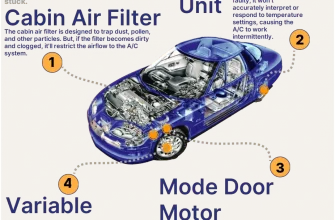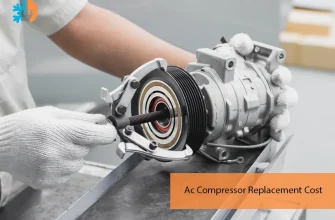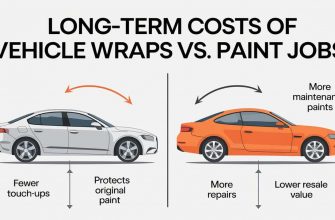As we stand on the brink of a new era in automotive technology, one aspect of vehicle design is poised for a revolutionary transformation: the suspension system. Gone are the days when car suspension was merely a mechanical assembly designed to provide comfort and control. Today, it is evolving into a sophisticated system that integrates advanced engineering, cutting-edge materials, and smart technology to redefine the driving experience.
- The Importance of Suspension Systems
- Smart Suspension Technology
- Materials Matter
- Magnetic and Hydraulic Innovations
- Autonomous Driving and Suspension
- The Road Ahead
- Electrification and Its Impact on Suspension Design
- Adaptive Systems for Diverse Terrains
- Environmental Considerations and Sustainability
- Integration with Vehicle Dynamics and Control Systems
- Challenges Ahead: Cost and Complexity
The Importance of Suspension Systems
At its core, the suspension system serves to connect the vehicle’s body to its wheels, ensuring stability, handling, and comfort. Traditionally, these systems have utilized springs, shock absorbers, and other mechanical components to absorb shocks from the road. However, with the rise of electric vehicles (EVs), autonomous driving, and increasing consumer demands for enhanced performance, the need for innovation in suspension technology has never been greater.
Smart Suspension Technology
One of the most exciting advancements in suspension systems is the integration of smart technology. Active suspension systems, which adjust the stiffness and damping in real time based on road conditions, are becoming more commonplace. These systems use sensors and algorithms to monitor the vehicle’s dynamics and make instantaneous adjustments, providing a smoother ride and improved handling. Brands like Tesla and Mercedes-Benz are already implementing these technologies, showcasing the future of driving comfort and safety.
Materials Matter
The choice of materials used in suspension components is also evolving. Lightweight materials such as carbon fiber and advanced polymers are replacing traditional steel, reducing the overall weight of the vehicle and enhancing fuel efficiency. Furthermore, new manufacturing techniques, including 3D printing, are enabling the creation of complex geometries that optimize performance while minimizing weight.
Magnetic and Hydraulic Innovations
Magnetorheological (MR) and electrorheological (ER) fluids are making waves in the suspension arena. These smart fluids change viscosity in response to magnetic or electric fields, allowing for rapid adjustments in damping characteristics. This technology provides unparalleled control and adaptability, making it ideal for high-performance vehicles and off-road applications.
Autonomous Driving and Suspension
As we move toward a future dominated by autonomous vehicles, the role of suspension systems will become even more critical. Self-driving cars require precise handling and stability, necessitating advanced suspension technologies that can anticipate and react to various driving conditions. This paves the way for further innovations, including predictive suspension systems that analyze road conditions ahead and adjust accordingly.
The Road Ahead
The future of car suspension systems is not just about comfort; it’s about creating a seamless interaction between the vehicle and its environment. As automakers continue to push the envelope in terms of performance, safety, and efficiency, the suspension system will play a pivotal role in this evolution.
Stay tuned, as the future of ride quality is just around the corner!
Electrification and Its Impact on Suspension Design
The push towards electrification in the automotive industry is reshaping not just how cars are powered but also how they handle the road. Electric vehicles (EVs) often feature a lower center of gravity due to the placement of heavy batteries, which alters traditional suspension dynamics. To take full advantage of this new weight distribution, manufacturers are developing suspension systems that are specifically tailored to harness the benefits of electric drivetrains. This includes enhancing cornering stability and reducing body roll, creating an entirely new driving experience that combines the thrill of performance with the serenity of silence.
Adaptive Systems for Diverse Terrains
As consumers seek versatility in their vehicles, adaptive suspension systems are gaining traction. These systems can be tuned to different driving conditions—whether navigating city streets, winding country roads, or rugged off-road trails; By utilizing advanced algorithms, these systems can analyze real-time data and adjust suspension settings accordingly. Imagine a scenario where your vehicle seamlessly transitions from a smooth highway ride to a rugged mountain trail, all while maintaining optimal comfort and control. This adaptability not only enhances driver confidence but also opens the door to new adventures without the worry of compromising performance.
Environmental Considerations and Sustainability
As the automotive industry embraces sustainability, there is a parallel push for eco-friendly suspension solutions. Manufacturers are exploring recyclable materials and sustainable production methods for suspension components. Innovations in bio-based materials and lightweight composites can reduce the environmental footprint of manufacturing while maintaining performance standards. This commitment to sustainability aligns with broader consumer values and regulatory requirements, making it an essential consideration in the future of automotive design.
Integration with Vehicle Dynamics and Control Systems
The future of car suspension systems is also interlinked with advancements in vehicle dynamics and control systems. As vehicles become more connected, the suspension can work alongside other systems, such as traction control and stability management, to create a cohesive driving experience. This synergy could lead to vehicles that not only adapt to road conditions but also predict and preemptively counteract potential hazards, ensuring that drivers remain safe and secure regardless of the situation.
Challenges Ahead: Cost and Complexity
While the innovations in car suspension systems are promising, they are not without challenges. The integration of advanced technologies often leads to increased complexity and cost. As manufacturers strive to make these systems available to a broader range of vehicles, balancing performance enhancements with affordability will be crucial. The industry must also address the maintenance and repair implications of these more intricate systems, ensuring that consumers can easily access support for their vehicles over time.
The future of car suspension systems is undoubtedly bright, characterized by innovation, adaptability, and sustainability. As technological advancements continue to unfold, we can anticipate a driving experience that is not only more comfortable and safer but also more engaging and responsive to our needs. With each leap in suspension technology, we inch closer to a world where our vehicles are not just modes of transport but extensions of our desires for freedom, adventure, and connection. Buckle up; the ride ahead promises to be exhilarating!









I loved how the article explained the importance of materials in suspension design. It
The insights on active suspension systems are groundbreaking! I can
Fantastic read! The discussion about the shift from traditional mechanical components to smart technology really captures where the automotive industry is headed.
This article brilliantly highlights the evolution of suspension systems. The integration of smart technology is truly fascinating and represents a significant leap forward in automotive innovation!
What an enlightening article! The potential for 3D printing in creating complex suspension parts is a game changer for automotive engineering!